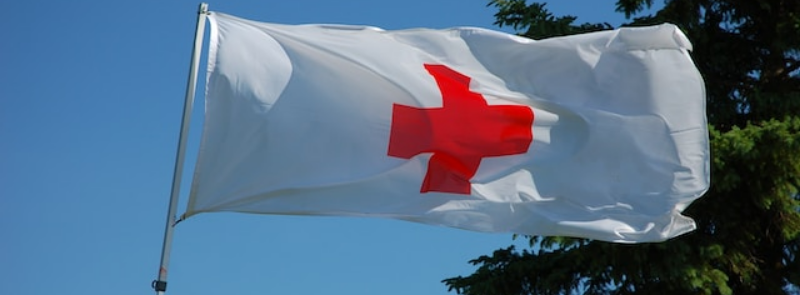
When It Occurs
Every May 8th
Timeline
Days Passed (966)
# Hashtags
#WorldRedCrossAndRedCrescentDay #HumanitarianEfforts
Every year on May 8th, World Red Cross and Red Crescent Day, also known as World Red Cross Day, is celebrated. This significant date marks the birthday of Henry Dunant, the founder of the International Committee of the Red Cross (ICRC) and the inaugural recipient of the Nobel Peace Prize. Born on May 8, 1828, in Geneva, Switzerland, Dunant passed away on October 30, 1910, in Heiden, Switzerland.
The occasion serves as a moment to acknowledge the dedicated efforts of Red Cross and Red Crescent volunteers and staff who respond to emergencies and crises globally. It provides an opportunity to express gratitude for the tireless work of the expansive network of organizations, volunteers, and staff committed to making a positive impact.
Background
World Red Cross and Red Crescent Day is observed annually on May 8th, the birthday of Henry Dunant, the founder of the International Red Cross and Red Crescent Movement and the first recipient of the Nobel Peace Prize. This day serves to honor the humanitarian spirit of the Movement and its tireless efforts to alleviate human suffering.
Significance of the International Red Cross and Red Crescent Movement
- Humanitarian Aid: The Movement provides assistance to millions of people affected by conflicts, natural disasters, and health crises worldwide.
- Neutrality and Impartiality: It operates under principles of neutrality, impartiality, and independence, ensuring aid reaches those in need regardless of their background.
- Global Reach: With 192 National Societies, the Movement has a vast network of volunteers and staff, making it one of the largest humanitarian organizations in the world.
Principles of the Movement
- Humanity: The Movement seeks to prevent and alleviate human suffering wherever it may be found, promoting mutual understanding, friendship, cooperation, and lasting peace among all peoples.
- Impartiality: It makes no discrimination as to nationality, race, religious beliefs, class, or political opinions, and endeavors to relieve the suffering of individuals based solely on their needs.
- Neutrality: To maintain the confidence of all, the Movement does not take sides in hostilities or engage in controversies of a political, racial, religious, or ideological nature.
- Independence: The Movement is independent, allowing it to act in accordance with its principles and assist those in need without external influence.
- Voluntary Service: It is a voluntary relief organization not prompted in any manner by desire for gain.
- Unity: There is only one Red Cross or Red Crescent Society in each country, open to all, carrying out its humanitarian work throughout its territory.
- Universality: The Movement is worldwide, with all societies having equal status and sharing equal responsibilities and duties in helping each other.
Celebrations and Activities
Public Awareness Campaigns: National Societies around the world organize campaigns to raise awareness about the work of the Red Cross and Red Crescent, highlighting its impact on local communities and global humanitarian efforts.
Volunteer Recognition: The day is used to recognize and celebrate the dedication and hard work of Red Cross and Red Crescent volunteers and staff. Awards and honors may be presented to outstanding individuals.
Educational Events: Workshops, seminars, and lectures are held to educate the public about the principles, history, and current activities of the Movement. Schools and universities may also participate in these educational initiatives.
Community Service Projects: National Societies may organize community service projects such as blood donation drives, health camps, disaster preparedness drills, and first aid training sessions to engage the public in humanitarian activities.
Cultural Programs: Cultural events such as concerts, art exhibitions, and plays may be organized to spread the message of humanitarianism and celebrate the diversity of the Movement.
Media Involvement: Media outlets are engaged to broadcast special programs, documentaries, and interviews with Red Cross and Red Crescent workers, volunteers, and beneficiaries to showcase the impact of their work.
Fundraising Events: Various fundraising activities, such as charity runs, auctions, and donation drives, are organized to support the ongoing humanitarian efforts of the Red Cross and Red Crescent.
Importance of World Red Cross and Red Crescent Day
- Recognition of Humanitarian Efforts: The day honors the invaluable contributions of volunteers and staff who work tirelessly to provide aid and support to those in need.
- Promotion of Humanitarian Principles: It reinforces the principles of humanity, impartiality, neutrality, and independence that guide the Movement's work.
- Raising Awareness: The observance helps increase public awareness of global humanitarian issues and the role of the Red Cross and Red Crescent in addressing these challenges.
- Encouraging Participation: By highlighting the work of the Movement, the day inspires more people to get involved in humanitarian activities, whether through volunteering, donating, or advocating for humanitarian causes.
Conclusion
World Red Cross and Red Crescent Day is a significant observance that celebrates the spirit of humanitarianism and the crucial work of the International Red Cross and Red Crescent Movement. Through various activities and events, the day honors the contributions of volunteers and staff, promotes the Movement's principles, and raises awareness about the importance of humanitarian aid in alleviating suffering and promoting peace worldwide.


